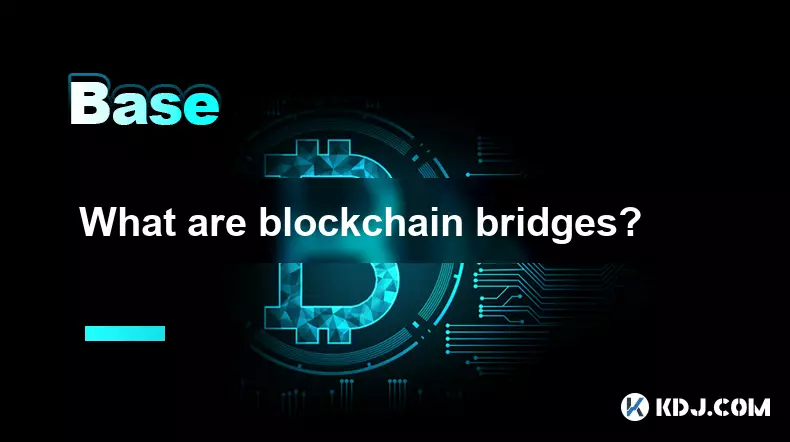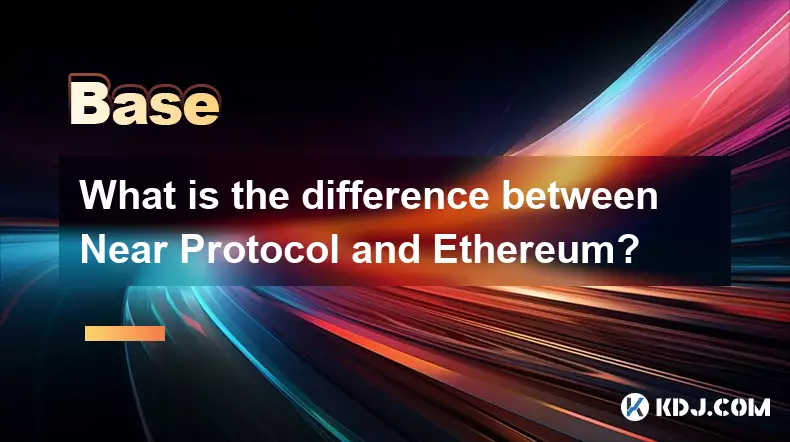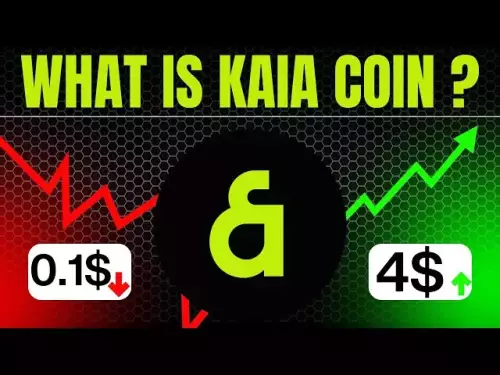-
 bitcoin
bitcoin $112715.707551 USD
-1.71% -
 ethereum
ethereum $4101.475385 USD
-3.01% -
 tether
tether $1.000644 USD
-0.02% -
 bnb
bnb $1207.619465 USD
-6.77% -
 xrp
xrp $2.501451 USD
-3.98% -
 solana
solana $202.947124 USD
-3.32% -
 usd-coin
usd-coin $1.000295 USD
0.04% -
 dogecoin
dogecoin $0.203884 USD
-4.47% -
 tron
tron $0.317154 USD
-1.72% -
 cardano
cardano $0.695009 USD
-4.43% -
 hyperliquid
hyperliquid $38.853961 USD
-8.23% -
 chainlink
chainlink $18.988674 USD
-4.64% -
 ethena-usde
ethena-usde $1.000233 USD
-0.03% -
 stellar
stellar $0.337050 USD
-3.63% -
 bitcoin-cash
bitcoin-cash $536.861728 USD
-1.28%
What are blockchain bridges?
Blockchain bridges enable cross-chain transfers of assets and data, but their security and design vary widely, making careful selection crucial for users.
Aug 30, 2025 at 08:23 am

Understanding Blockchain Bridges
1. Blockchain bridges are mechanisms that enable the transfer of assets, data, or smart contract calls between two separate blockchain networks. These networks often operate under different consensus rules, programming languages, and security models. By connecting them, bridges allow users to leverage the unique features of multiple blockchains without being confined to a single ecosystem.
2. One primary use case for blockchain bridges is moving tokens from one chain to another. For example, a user might want to take their Ethereum-based ERC-20 tokens and use them on the Polygon network to benefit from lower transaction fees and faster processing times. The bridge facilitates this transfer by locking the original tokens on the source chain and minting a corresponding amount on the destination chain.
3. Bridges can be categorized into two main types: trust-based (centralized) and trustless (decentralized). Trust-based bridges rely on a central authority or validator set to manage the locking and minting process. While they are often easier to implement and faster to operate, they introduce counterparty risk. Trustless bridges, on the other hand, use cryptographic proofs and smart contracts to ensure security, reducing reliance on intermediaries.
4. The technical architecture of a bridge typically involves smart contracts on both the source and destination chains, along with an oracle or relayer system that communicates state changes between them. When a user initiates a transfer, the source chain contract locks the tokens, and the relayer notifies the destination chain contract to mint equivalent tokens. This process must be carefully secured to prevent exploits such as double-spending or fake minting.
5. Despite their utility, blockchain bridges have become high-value targets for hackers. Several high-profile exploits have resulted in the loss of hundreds of millions of dollars. These attacks often exploit vulnerabilities in the bridge’s smart contracts or the communication layer between chains. As a result, security audits, formal verification, and decentralized validation mechanisms are critical components of any robust bridge design.
Types of Blockchain Bridges
1. Federated bridges are operated by a predefined group of validators or nodes. These entities must collectively agree on the validity of cross-chain transactions. Examples include the Liquid Network and certain enterprise-focused solutions. While efficient, their centralized nature contradicts the ethos of decentralization embraced by many in the crypto community.
2. Liquidity pool-based bridges function similarly to decentralized exchanges. They use pools of assets on both chains to facilitate swaps. Users deposit tokens on one side and receive equivalent assets from the pool on the other side. These bridges do not require minting new tokens but depend heavily on sufficient liquidity to function effectively.
3. Lock-and-mint bridges work by locking tokens on the source chain and creating wrapped versions on the destination chain. The original tokens remain locked until they are redeemed and burned on the destination side. This model is used by bridges like Wormhole and Multichain, enabling interoperability between Ethereum and Solana, among others.
4. Burn-and-mint bridges destroy the original tokens when they are transferred and create new ones on the target chain. This approach ensures a consistent total supply across chains but requires tight coordination between the two networks’ smart contracts to prevent inflationary exploits.
5. Atomic swap bridges rely on hash time-locked contracts (HTLCs) to enable peer-to-peer exchanges without intermediaries. While truly trustless, atomic swaps are limited in scope due to technical constraints and are not widely adopted for large-scale asset transfers.
Security Challenges in Cross-Chain Communication
1. One of the most pressing concerns with blockchain bridges is their attack surface. Since they hold large amounts of locked assets, they are attractive targets. Exploits often occur through compromised private keys, flawed smart contract logic, or manipulated oracle data.
2. Oracle manipulation is a common vulnerability. If a bridge relies on external data feeds to verify transactions, attackers may spoof or alter this information to trigger unauthorized minting. Implementing decentralized oracles with multiple data sources can mitigate this risk.
3. Reentrancy attacks have also affected bridge contracts. In such attacks, malicious actors repeatedly call a function before the previous execution completes, draining funds. Proper coding practices and audit protocols are essential to prevent these exploits.
4. Governance attacks are possible in bridges that use upgradable smart contracts. If the upgrade mechanism is controlled by a small group, attackers may compromise their keys or manipulate voting processes to deploy malicious code.
5. Cross-chain message spoofing occurs when an attacker forges a message from one chain to another, tricking the destination contract into releasing funds. Cryptographic signatures and chain-specific verification layers help reduce this risk.
Frequently Asked Questions
What happens if a blockchain bridge gets hacked?When a bridge is compromised, attackers typically drain the locked assets from its smart contracts. Users who deposited funds may lose their tokens permanently unless the team initiates a recovery plan or issues a new token to replace the lost value.
Can blockchain bridges support NFT transfers?Yes, many bridges are designed to transfer non-fungible tokens (NFTs) across chains. The process involves locking the original NFT and minting a verifiable copy on the destination chain, often using metadata and ownership proofs to maintain authenticity.
Are wrapped tokens the same as the original?Wrapped tokens represent the value of the original asset but are not identical. They are issued by the bridge and depend on the underlying system’s integrity. Their value is pegged to the original, but redemption requires the bridge to function correctly.
How do users choose a reliable bridge?Users should evaluate a bridge’s audit history, team transparency, volume of locked assets, and community reputation. Bridges with open-source code, multiple security audits, and decentralized validation are generally considered more trustworthy.
Disclaimer:info@kdj.com
The information provided is not trading advice. kdj.com does not assume any responsibility for any investments made based on the information provided in this article. Cryptocurrencies are highly volatile and it is highly recommended that you invest with caution after thorough research!
If you believe that the content used on this website infringes your copyright, please contact us immediately (info@kdj.com) and we will delete it promptly.
- Crypto News, Crypto Gems, Live Today: Unearthing the Next 1000x Crypto
- 2025-10-15 20:25:16
- Ethereum, Altcoins, and Investment: Navigating the Crypto Landscape in 2025
- 2025-10-15 20:25:16
- EUROD: ODDO BHF's Stablecoin Signals a Euro-Powered Crypto Future
- 2025-10-15 20:30:01
- Mark Yusko on Bitcoin: Why Government Buying is Inevitable
- 2025-10-15 20:30:01
- Kart Rumble: The Meme Coin Gaining Traction in Web3 Gaming
- 2025-10-15 20:30:01
- Yield Guild Games (YGG) Lands on Upbit: A New Chapter for P2E?
- 2025-10-15 20:30:15
Related knowledge

How do decentralized identity (DID) solutions work?
Oct 14,2025 at 11:36pm
Understanding Decentralized Identity in the Blockchain Ecosystem1. Decentralized identity (DID) solutions are built on blockchain networks, allowing i...

What is the difference between Near Protocol and Ethereum?
Oct 15,2025 at 08:01am
Near Protocol and Ethereum: Core Architectural Differences1. Near Protocol operates on a sharded blockchain architecture known as Nightshade, which al...

What does it mean for code to be "open source" in crypto?
Oct 12,2025 at 01:54pm
Understanding Open Source in the Cryptocurrency Ecosystem1. In the context of cryptocurrency, open source refers to software whose code is publicly ac...

What is the purpose of a "testnet"?
Oct 12,2025 at 09:01am
Understanding the Role of Testnets in Blockchain Development1. A testnet serves as a parallel version of a blockchain network, designed specifically f...

How to avoid phishing scams in crypto?
Oct 13,2025 at 06:18pm
Understanding Common Crypto Phishing Tactics1. Cybercriminals frequently use fake websites that mirror legitimate crypto exchanges or wallet platforms...

What is the difference between single-collateral and multi-collateral Dai?
Oct 12,2025 at 05:18pm
Understanding Single-Collateral Dai1. Single-Collateral Dai (SCD) was the original version of the Dai stablecoin launched by MakerDAO in 2017. It allo...

How do decentralized identity (DID) solutions work?
Oct 14,2025 at 11:36pm
Understanding Decentralized Identity in the Blockchain Ecosystem1. Decentralized identity (DID) solutions are built on blockchain networks, allowing i...

What is the difference between Near Protocol and Ethereum?
Oct 15,2025 at 08:01am
Near Protocol and Ethereum: Core Architectural Differences1. Near Protocol operates on a sharded blockchain architecture known as Nightshade, which al...

What does it mean for code to be "open source" in crypto?
Oct 12,2025 at 01:54pm
Understanding Open Source in the Cryptocurrency Ecosystem1. In the context of cryptocurrency, open source refers to software whose code is publicly ac...

What is the purpose of a "testnet"?
Oct 12,2025 at 09:01am
Understanding the Role of Testnets in Blockchain Development1. A testnet serves as a parallel version of a blockchain network, designed specifically f...

How to avoid phishing scams in crypto?
Oct 13,2025 at 06:18pm
Understanding Common Crypto Phishing Tactics1. Cybercriminals frequently use fake websites that mirror legitimate crypto exchanges or wallet platforms...

What is the difference between single-collateral and multi-collateral Dai?
Oct 12,2025 at 05:18pm
Understanding Single-Collateral Dai1. Single-Collateral Dai (SCD) was the original version of the Dai stablecoin launched by MakerDAO in 2017. It allo...
See all articles


























![Staking ATH: How To Stake $ATH in October 2025 with 523% APY — [Step-By-Step Guide] Staking ATH: How To Stake $ATH in October 2025 with 523% APY — [Step-By-Step Guide]](/uploads/2025/10/15/cryptocurrencies-news/videos/staking-ath-stake-ath-october-apy-stepstep-guide/68eef94d80903_image_500_375.webp)















































